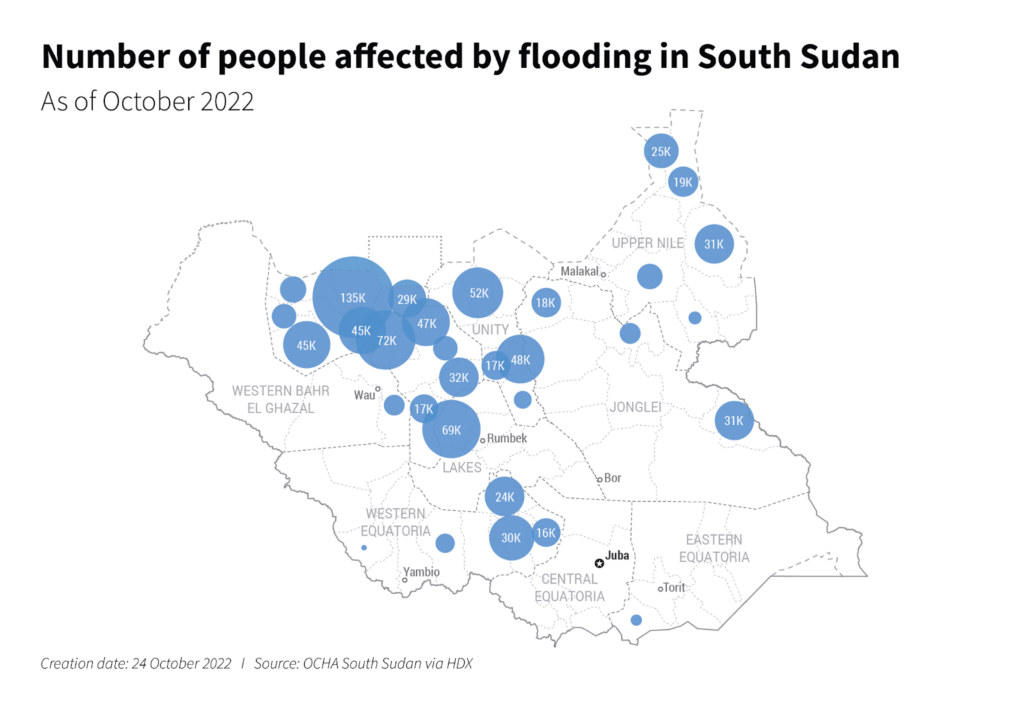Share
The climate crisis is intensifying humanitarian emergencies around the world, and extreme weather events, such as heatwaves and floods, are hitting the most vulnerable people the hardest. As a result, humanitarians are increasingly having to incorporate climate data and forecasts into their analysis and planning. This is especially the case for anticipatory action, which relies on models to predict the impacts of a hazard on lives and livelihoods and trigger actions to mitigate them.
Over the past two years, the Centre’s predictive analytics team has been using climate data to develop the trigger mechanisms that are part of an anticipatory action framework. The triggers are used to prompt the release of funds ahead of a shock. To anticipate the impact of a hazard (e.g., a flood, storm, drought) and design thresholds for when to act, we must understand three things: what happened? (the hazard); how bad was it? (the impact); and what is likely to happen next? (the forecast).
The data that is most often missing for this analysis is related to the impact: the data linking previous hazards to their impact on vulnerable populations. With this data in hand, it is possible to model the expected impact of a future shock.
To bring new focus and urgency to getting this data, we are expanding the HDX Data Grids to include a subcategory for climate impact data. This will help us highlight critical data gaps and work with our partners to close them across priority humanitarian contexts.
For the HDX Data Grids, we define climate impact data as:
Tabular or vector data containing current and/or historical (previous 10 years) impacts of climate events relating to floods, droughts and storms. The data should specify the location of the event, date of the event, and contain at least one indicator of impact such as spatial extent of event, disruption to affected populations, destroyed infrastructure, and/or affected vegetation.
By the end of October, the climate impact subcategory was 28 percent complete with data available for seven out of 25 countries. A few examples include:
- Afghanistan: Shared by humanitarian partners via OCHA Afghanistan, this dataset contains climate disaster incidents that have occurred in 2022 and their impact on people, including the number of people killed or injured and the number of homes damaged or destroyed.
- Burundi: Shared by IOM via OCHA Burundi, this dataset contains climate disaster incidents from 2018 to the present and their impact on people, infrastructure, and agriculture.
- South Sudan: Aggregated by OCHA South Sudan, this dataset contains the reported number of flood-affected people by county and state in 2021 and 2022 (see map below for 2022 figures).

Data has just been added to HDX on the historical impact of typhoons on housing in the Philippines. This data has been produced by national authorities to train a typhoon model that is able to predict the expected number of severely damaged buildings before landfall. This insight will allow partners to take actions to lessen the impact of a typhoon on people living in these locations.
We hope our efforts contribute to making climate impact data easier to find and use for analysis. Beyond improving data availability, the Centre is also working to address the barriers to using climate-related data by offering workshops and guidance on interpreting forecasts. We will share more information on this in the coming weeks and months.
Should your organization have climate-related data to share, please get in touch with the HDX team at hdx@un.org.